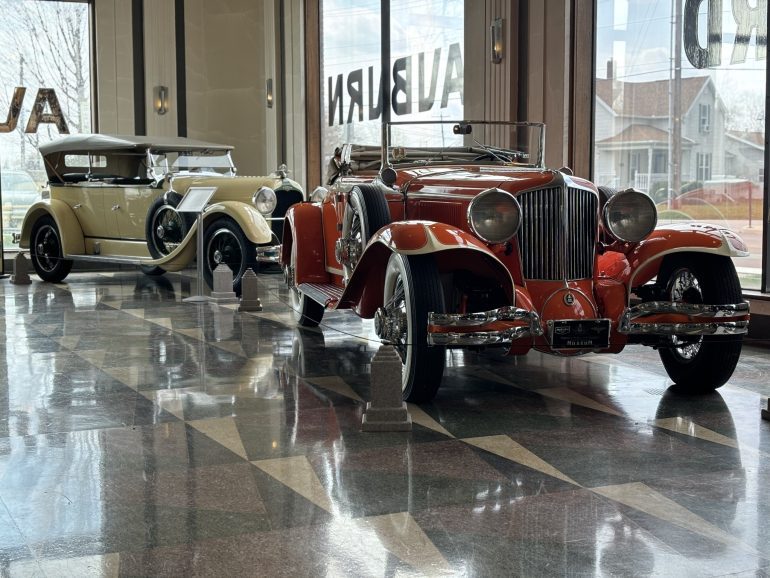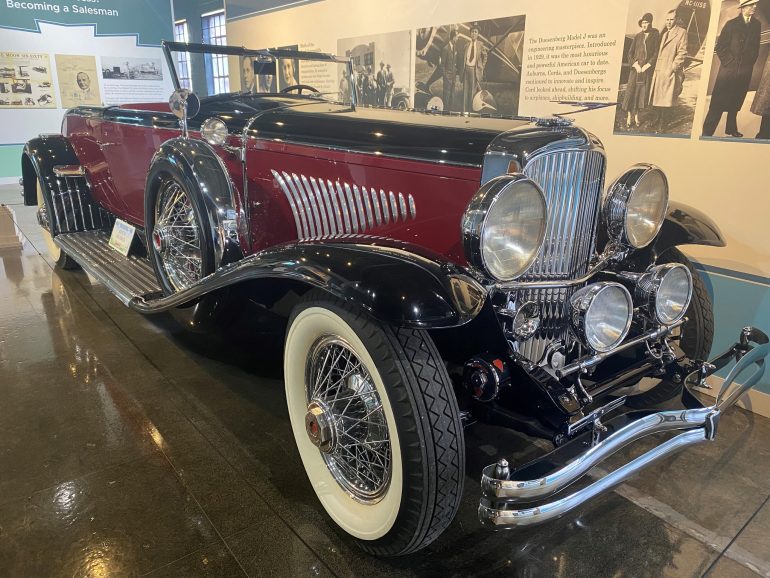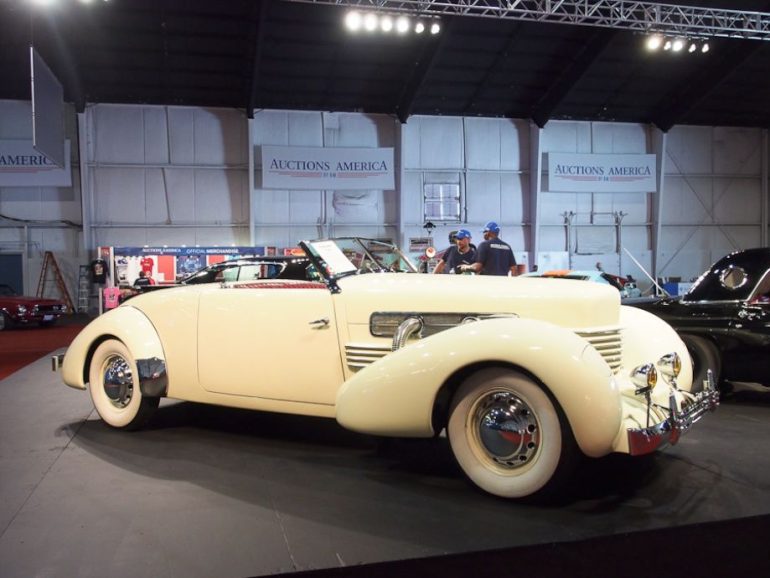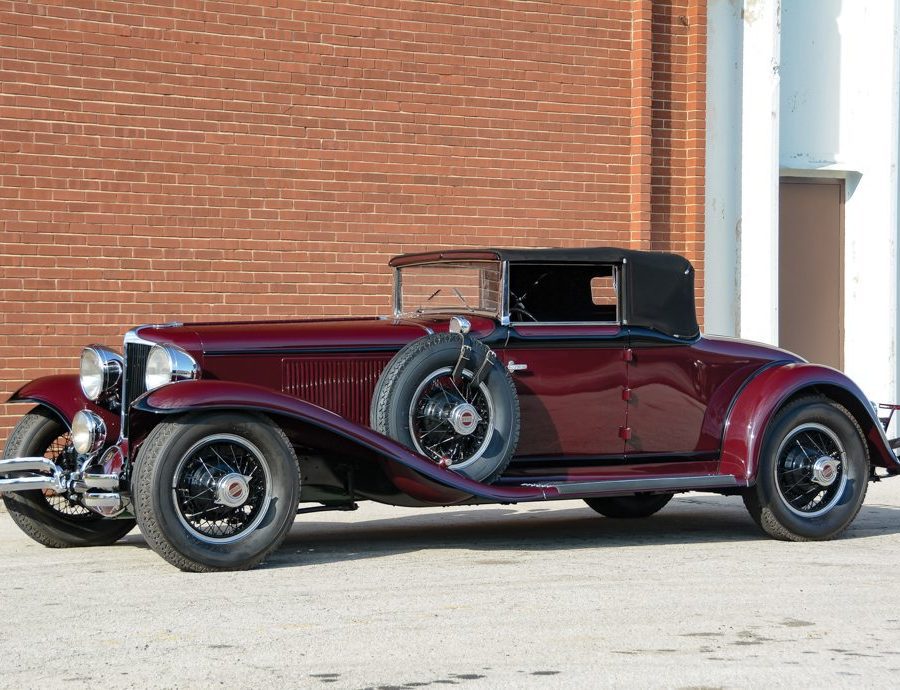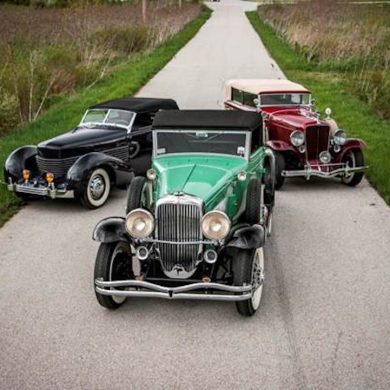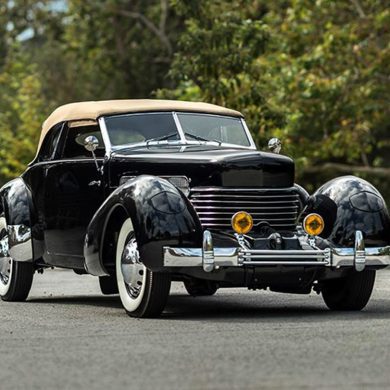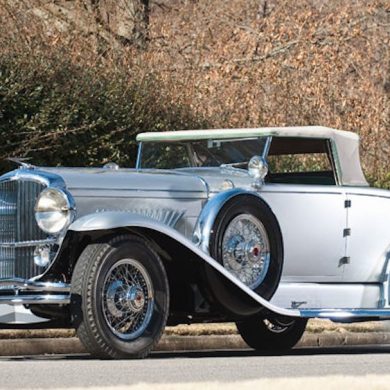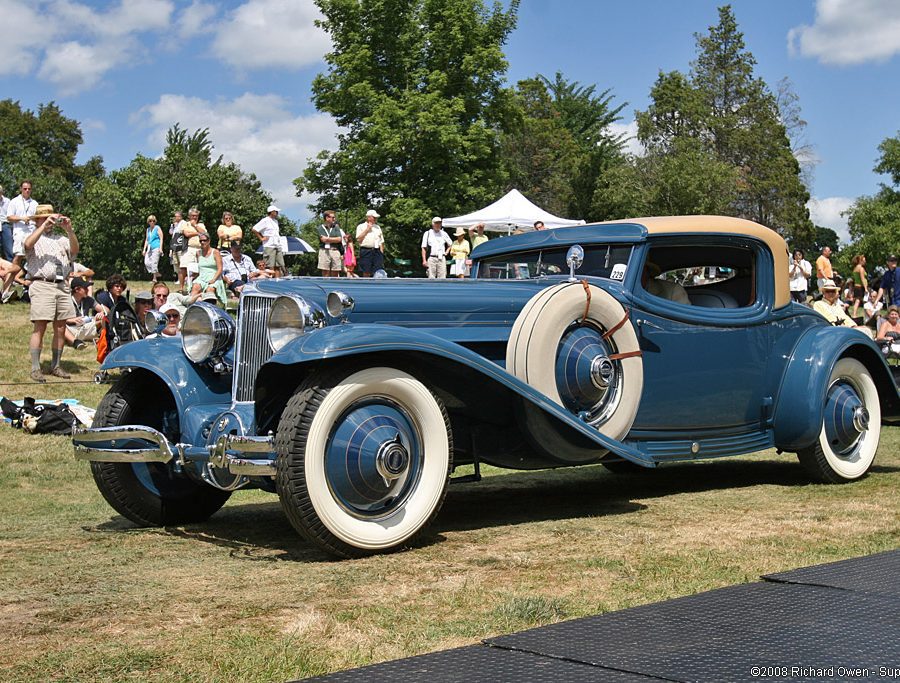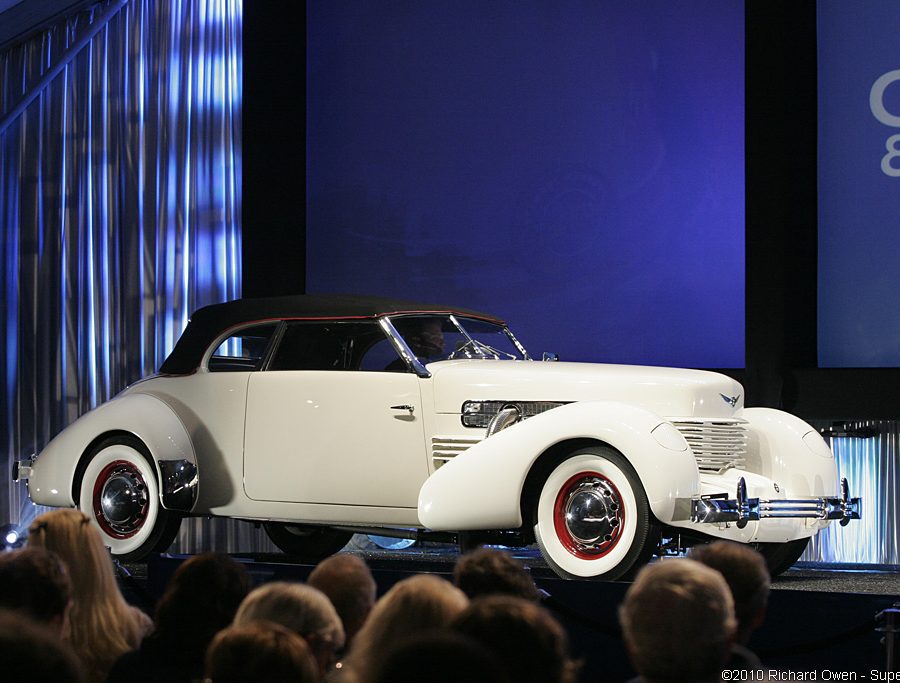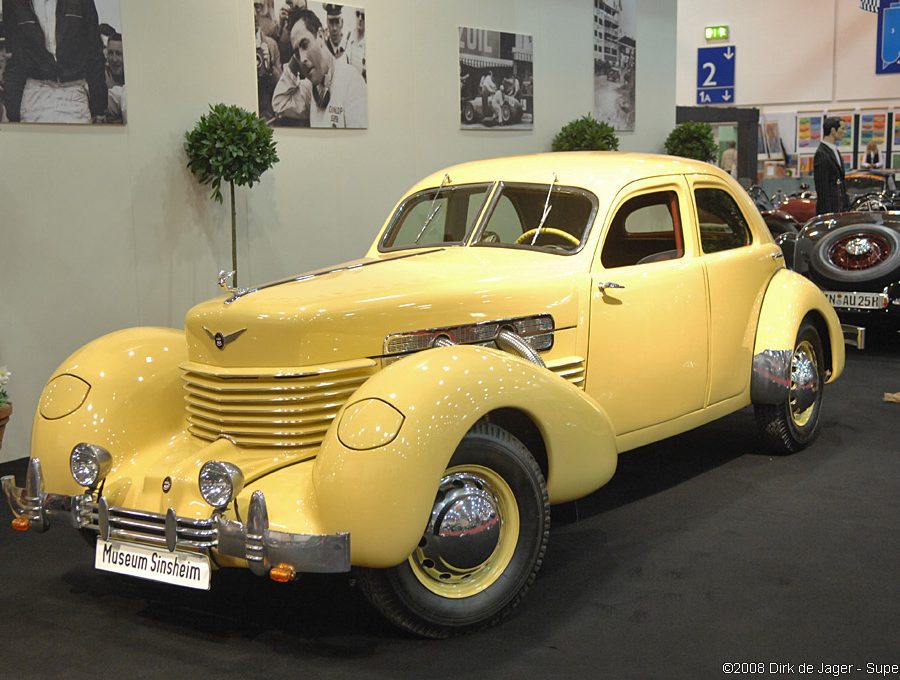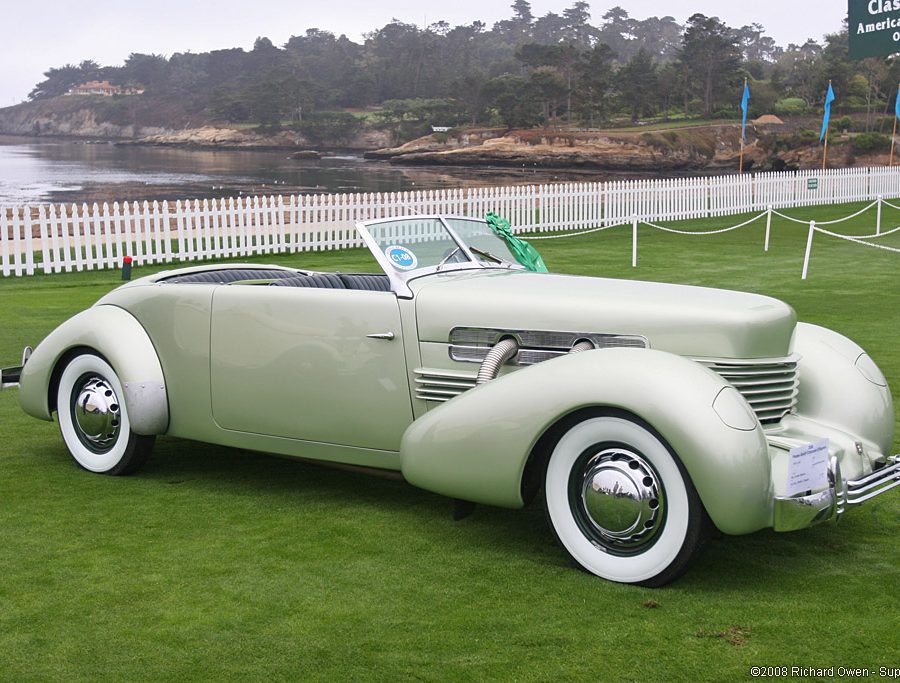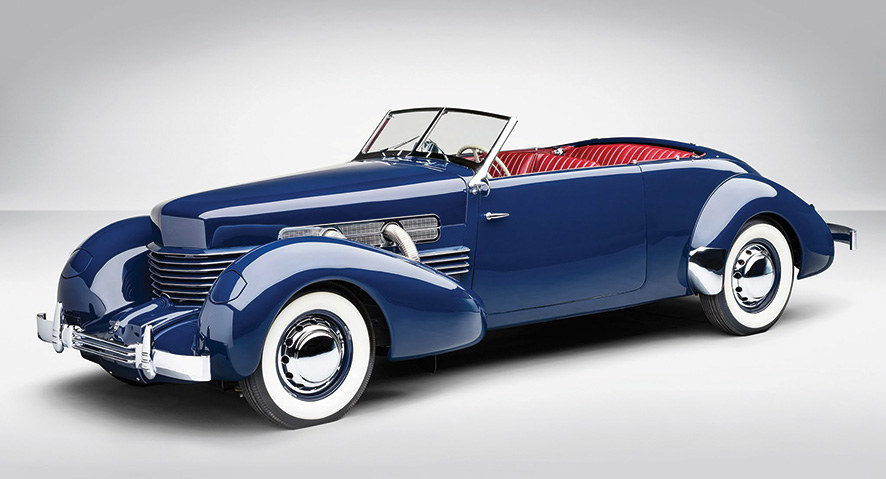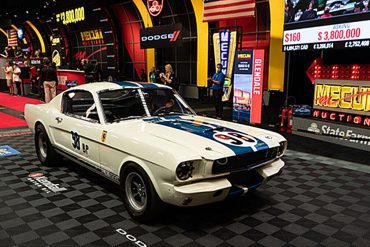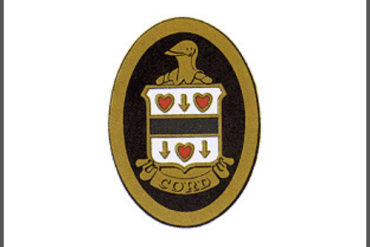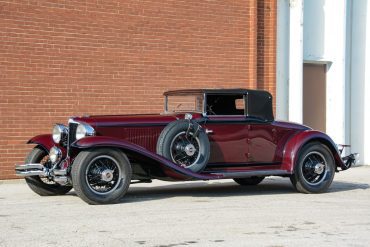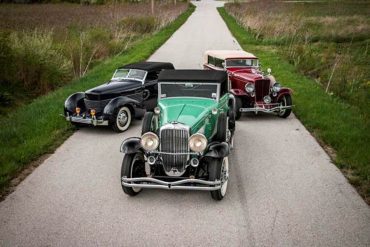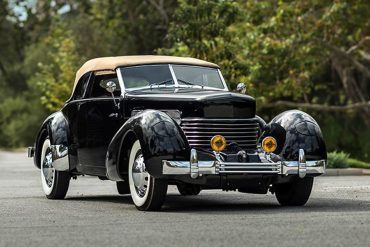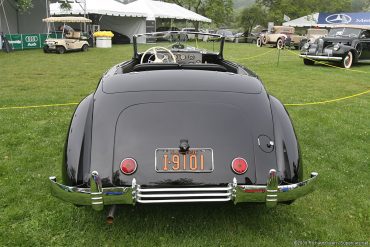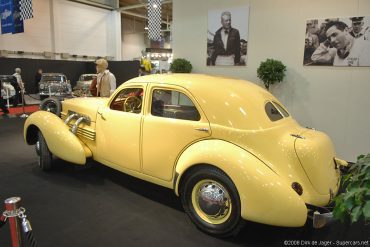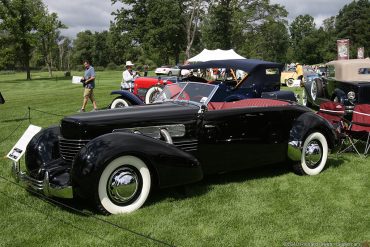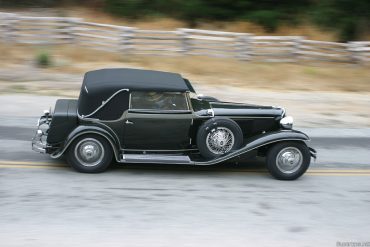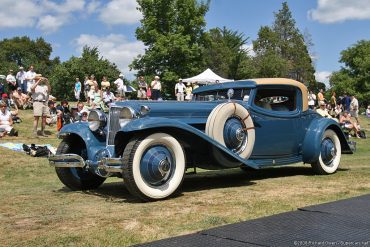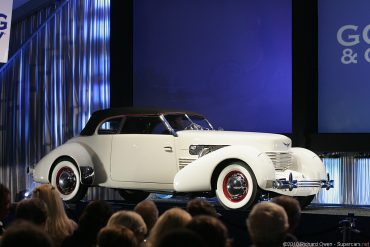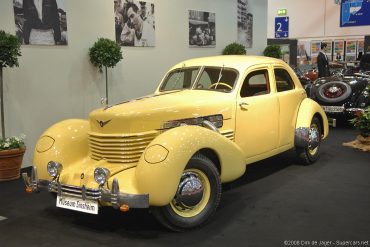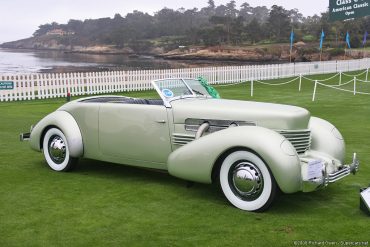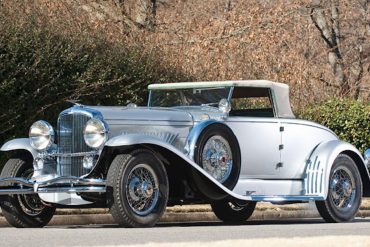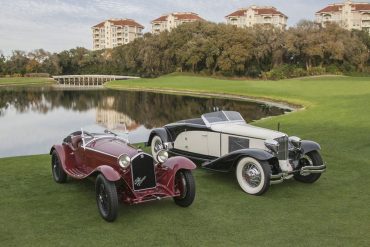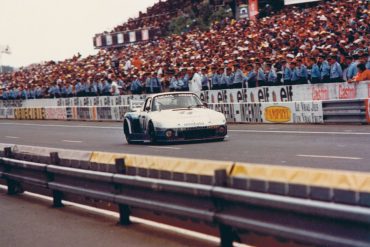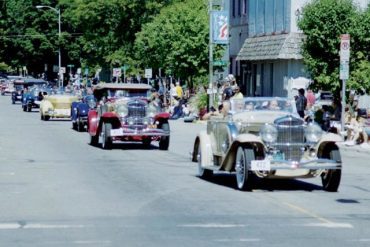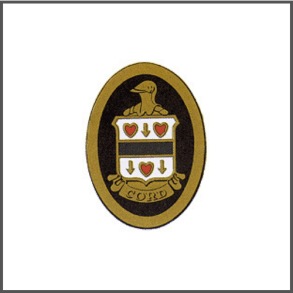
Cord
Research, History, Models, Media & More
The Market / Models & Guides / News & Updates / A Brief History
Cord Automobiles, a name synonymous with innovation and luxury in the early 20th century, has an intriguing history rooted in the entrepreneurial spirit of E.L. Cord. Established as a subsidiary of the Auburn Automobile Company in Connersville, Indiana, Cord was founded in 1929. E.L. Cord, a visionary businessman, aimed to produce vehicles that were not only technically advanced but also stylistically groundbreaking.
The Birth of the L-29
The first model to bear the Cord name was the L-29, introduced in 1929. The L-29 was revolutionary for its time, being the first American front-wheel-drive car available to the public. This design offered several advantages, including a lower chassis, which provided a sleeker and more aerodynamic look, and improved handling. The L-29's advanced engineering included a Lycoming straight-eight engine, which further cemented its status as a high-performance vehicle. Despite its innovation, the L-29 was introduced just as the Great Depression began, limiting its commercial success due to its high price.
The Iconic 810/812 Series
Cord’s most iconic models, the 810 and 812 series, were introduced in 1936 and 1937, respectively. Designed by Gordon Buehrig, these models are often celebrated as some of the most beautiful cars ever made. The 810/812 series featured several groundbreaking features:
Hidden headlights, operated by a crank mechanism, were a first in automotive design.
A wraparound grille, often referred to as the “coffin nose,” which became a distinctive design element.
Front-wheel drive, continuing the innovative spirit of the L-29.
An optional supercharger on the 812 models, identifiable by the external exhaust pipes, which significantly enhanced performance.
The 810/812 models were not only aesthetically advanced but also included several technical innovations such as an all-steel body, which was unusual at a time when most cars were built with a wood frame.
Challenges and Legacy
Despite their advanced design and engineering, Cord automobiles faced several challenges. The company struggled with financial difficulties and production issues. The innovative pre-selector gearbox, while ahead of its time, had reliability problems that tarnished Cord's reputation for dependability. Additionally, the high cost of production and the economic constraints of the Great Depression made it difficult for Cord to sustain its business.
By 1937, production of Cord automobiles ceased, and the company was eventually absorbed into the larger Auburn-Cord-Duesenberg conglomerate. Despite its short-lived existence, Cord left an indelible mark on the automotive industry.
Cord's Impact on Automotive Design
Cord automobiles are now revered as classics, highly sought after by collectors and enthusiasts. The forward-thinking design elements introduced by Cord have influenced automotive design for decades. The hidden headlights concept was later adopted by several manufacturers, and the front-wheel-drive system, though not immediately successful, paved the way for future developments in drivetrain configurations.
In 1951, the Cord 810/812 was recognized by the Museum of Modern Art in New York as one of the ten most significant automobile designs. This accolade is a testament to Cord's lasting influence on automotive design and innovation.
Conclusion
The history of Cord Automobiles is a fascinating tale of innovation, design, and ambition. Though the company was short-lived, its impact on the automotive industry endures. The Cord L-29 and 810/812 models are celebrated not only for their aesthetic appeal but also for their pioneering engineering. Today, Cord remains a symbol of the golden age of American automotive design, a testament to what can be achieved when creativity and technology intersect.
Cord Basics
Founded: December 28, 1929
Founder: Errett Lobban Cord
Defunct: December 23, 1937
Fate: Bankruptcy
Headquarters: Auburn, Indiana, U.S
Did You Know?
Cord was the first American car company to offer front-wheel drive to the public with their L-29 model in 1929. This was a revolutionary feature at the time and set them apart from their competitors.
The Cord 810 and 812 models featured retractable headlights, a truly unique and innovative design element for the time. These headlights could be hidden away when not in use, giving the car a sleek and streamlined appearance.
Due to the 810/812's distinctive, flat front end, the car earned the nickname "Coffin Nose." Despite the morbid nickname, the car's design was considered quite futuristic for its time.
More Cord Content
Cord. A Brief History
Errett Lobban Cord ran some 150 transport-related companies in the USA and in 1924 he was approached to help out at the struggling Auburn Automobile Company. However, Cord countered with a leveraged buyout proposal that was accepted. Cord sold off the old stock and then began the glory days for Auburn and a new brand, Cord.
E L Cord also acquired the Limousine Body Company, along with Duesenberg and Lycoming.
The Cord brand was designed to slot between Auburn and Duesenberg cars and was noted for its innovative technology and streamlined designs. Cord innovations included front-wheel drive with constant-velocity joints on the L-29 and concealed headlamps on the 810 and 812.
The Cord L-29 was the first American front-wheel drive car to be offered to the public, beating Ruxton by several months, in 1929. The brainchild of former Miller engineer Cornelius Van Ranst, its drive system borrowed from the Indianapolis 500-dominating racers, using the same proved de Dion layout and inboard brakes.
The front end was a brilliant design that squeezed a gearbox, differential, inboard drum brakes and drive half-shafts ahead of a shortened chassis, without the common projecting ‘dumb irons’.
Suspension was handled by four forward facing, quarter-elliptic leaf springs that were shackled to a de Dion tube that run across the front of the vehicle. It was, in effect, a rear-wheel drive de Dion arrangement turned around and mounted at the front of the car. Brilliant!
The lack of a propellor shaft and driving rear axle meant that the L-29 had a lower chassis than its rear-wheel-drive competitors and that fame height allowed low, rakish body designs that others couldn’t match.
The L-29 was powered by Lycoming’s 4934 cc (301 cu in), 125 hp (93 kW), straight-eight 120, with front-mounted flywheel and three-speed transmission. With typical bodywork the L-29 tipped scales at more than two tons, so performance was modest, with a top speed of only 80mph, but handling was reportedly, superb.
Pricing was on a par with Cadillac, Marmon, Lincoln, Packard, Franklin and Stutz, at around US$45,000 of today’s money.
The L-29 was produced until 1932, with around 4400 sold, when the Great Depression hit luxury vehicles sales very hard. Even price reductions failed to improve the sales position and the L-29 bit the dust in 1932.
Cord rebirth came three years later with the 810 model – and later 812 – that are the best-known of the company’s products. They feature unique styling by Gordon Buehrig – arguably the most beautiful American cars ever made – and caused an absolute sensation at the New York Auto Show in 1935.
The 810 had streamlined bodywork and was so low to the ground that running boards were unnecessary. Standard features included ‘disappearing’ headlights that were operated by dashboard hand cranks; full instrumentation and a radio. Hidden door and boot hinges preserved its sleek exterior.
Early production models had coolant and oil fillers under a flap in the front cowl: water overflow spilt on the ground, but the engine oil level could be checked by pressing a switch that converted the fuel tank level gauge to engine oil level.
The 810 had the same front-wheel drive and independent front suspension as the L-29, but the engine was a shorter, Lycoming V8 that displaced 4739 cc (289 cu in) and produced the same 125 horsepower (93kW) as the L-29.
The 810 had a four-speed, electrically-selected semi-automatic transmission that proved troublesome and delayed deliveries until well into 1936. Only 1174 Cord 810s were delivered in the first model year, so they were re-numbered as 812s and sold in 1937.
However, there was supercharging option on the 812, using a Cummins-Schwitzer blower that boosted power to a much more acceptable 170hp. Supercharged 812s had four distinctive, chromed, external exhaust pipes.
The end came in late 1937, when Cord production ceased.
The Cord empire, amid allegations of financial fraud, was sold to the Aviation Corporation, and E L Cord moved to Nevada, where he found real estate and other enterprises more profitable than luxury car manufacture.
